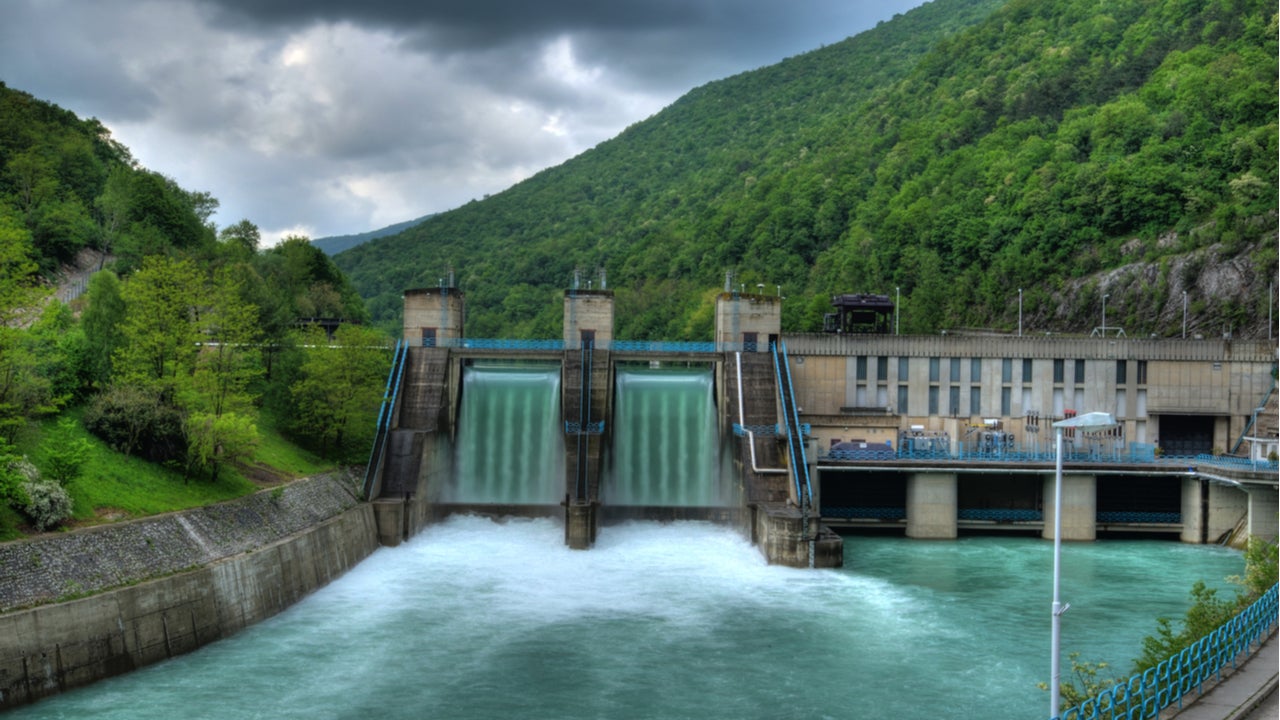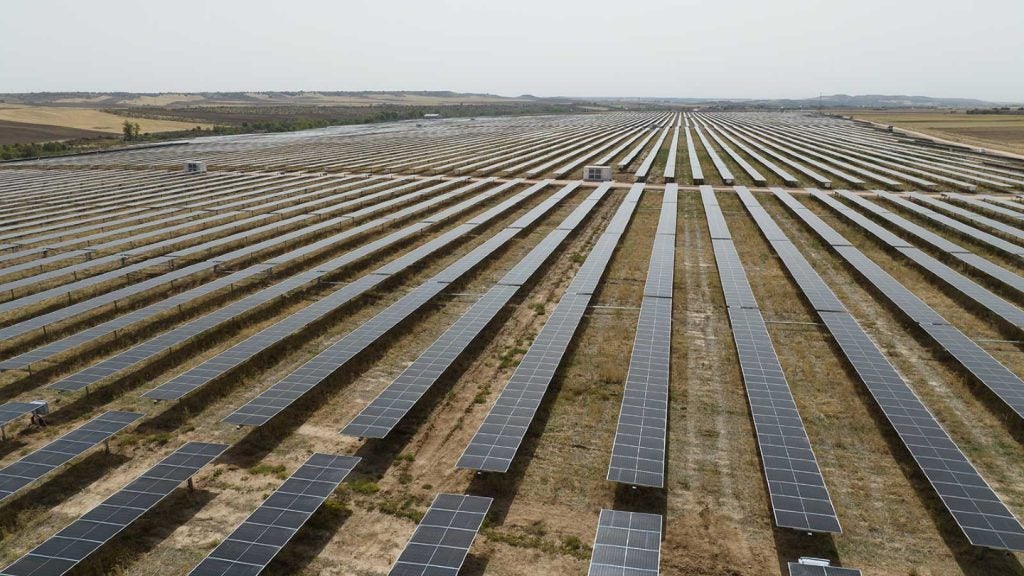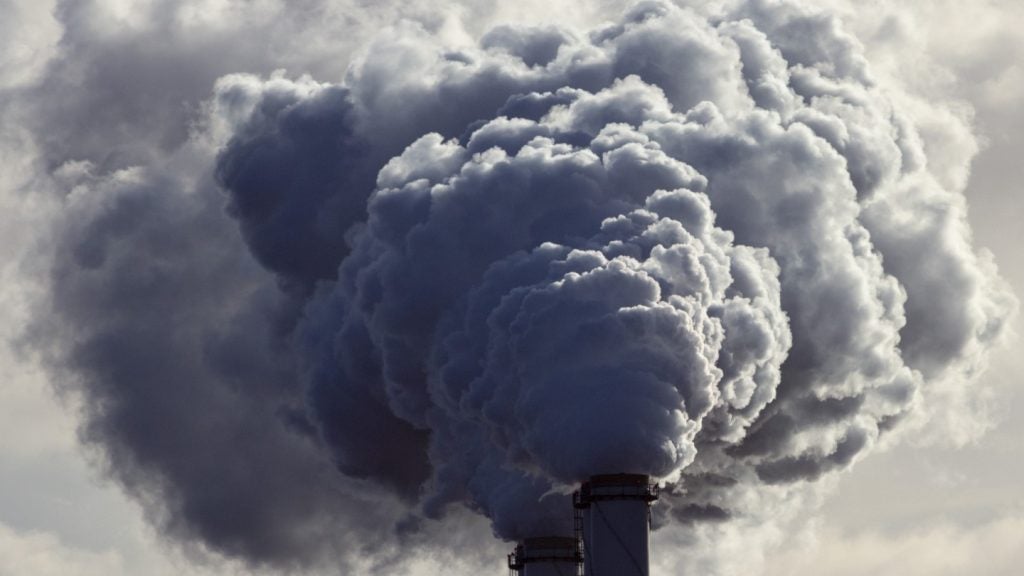
Hydropower is the world’s biggest source of renewable power generation with a total installed capacity of more than 1,307GW. It is expected to remain the biggest source during the period between 2019 and 2024, according to a report of the International Energy Agency (IEA). Power Technology ranks ten of the world’s biggest hydroelectric power plants by power generation capacity.
World’s biggest hydroelectric power plants: Top ten by capacity
1. Three Gorges Dam – 22.5GW
How well do you really know your competitors?
Access the most comprehensive Company Profiles on the market, powered by GlobalData. Save hours of research. Gain competitive edge.

Thank you!
Your download email will arrive shortly
Not ready to buy yet? Download a free sample
We are confident about the unique quality of our Company Profiles. However, we want you to make the most beneficial decision for your business, so we offer a free sample that you can download by submitting the below form
By GlobalData2. Itaipu Dam – 14GW
3. Xiluodu – 13.86GW
4. Belo Monte – 11.23GW
5. Guri – 10.2GW
6. Tucurui – 8.37GW
7. Grand Coulee – 6.8GW
8. Xiangjiaba – 6.44GW
9. Longtan – 6.42GW
10. Sayano-Shushenskaya – 6.4GW
1. Three Gorges – 22.5GW

Built on the Yangtze River in the Hubei Province of central China, the Three Gorges Dam power project is the biggest hydroelectric dam in the world. The 2.3km-long concrete gravity dam is designed to control massive floods in the flood-prone upper sections of the Yangtze River by diverting them downstream. Equipped with 34 turbo generators, the power plant has an installed capacity of 22.5GW. It has a 483m-long spillway, a left powerhouse, and a right powerhouse.
Operational since 2003, the $31bn hydroelectric power plant is the major source of electricity in East China, Central China, South China’s Guangdong Province and other regions. Owned by China Three Gorges Corporation (CTGC), it created the world record for annual power production from a single hydropower station in 2020, generating 111.8 billion kilowatt-hours (kWh). The power plant helped avoid the use of 31.7 million tonnes (Mt) of coal and eliminate 86.7Mt of carbon dioxide, 19,600t of nitrogen oxide, and 20,600t of sulphur dioxide.
Although the dam helps produce cleaner power and reduce reliance on coal, which China burns in large quantities for power generation, the power project faced questions over its ability to withstand heavy floods. Three Gorges received its largest flood peak since it became operational in August 2020, after torrential rains raised inflows to the dam. The project was claimed to have passed all flood control and power generation tests in November 2020, allaying doubts over its efficacy.
2. Itaipu – 14GW

The Itaipu Binacional hydroelectric power plant is located on the Parana River, straddling the border between Brazil and Paraguay. It has 20 generating units with a combined capacity of 14GW. Owned by the governments of Brazil and Paraguay, the power plant was built using 12.3 million cubic metres (mcm) of concrete. Steel and iron used in the project are sufficient to build 380 Eiffel Towers.
The 7.23km-long dam is 196m-high, taller than a 55-storey building. The power plant held the previous world record for annual power generation, producing 103.09 billion kilowatt-hours in 2016. Instrumental to the energy needs of Brazil and Paraguay, the plant meets 15% of Brazil’s energy consumption and 90% of Paraguay’s energy consumption. The facility has the highest total production of hydroelectric power in history.
By the end of 2020, it achieved cumulative production of 2.77 billion megawatt-hours (MWh) since its commissioning in 1984. The plant is planned to undergo technological upgrades to improve its efficiency. A long-term modernisation programme will enable the Itaipu power plant to operate sustainably for decades to come.
3. Xiluodu – 13.86GW

The Xiluodu hydropower station on Jinsha Jiang River, China, became fully operational in 2014. The 18 Francis turbine-generating units of the plant are installed equally on the left and right bank. The country’s second largest hydro facility, Xiluodu has a concrete double curvature arch dam with a maximum dam height of 285.5m.
The major focus areas of the project are power generation, flood control, as well as improving navigation conditions. The project includes five massive control gates to control the river flow through the dam.
Owned by China Yangtze Power, the plant is one of the major sources of renewable energy in China, supporting the country’s efforts to meet the enormous energy demand while reducing emissions and coal consumption. It generates 64 billion kilowatt-hours of renewable energy a year, which is fed to the State Grid and China Southern Power Grid.
4. Belo Monte – 11.23GW

The Belo Monte hydroelectric project is situated on the Xingu River in the Amazon rainforest in the state of Para, Brazil. With an installed capacity of 11.23GW, it generates enough power to meet 10% of Brazil’s total energy consumption and meets the energy needs of 60 million people. The installed capacity is equivalent to approximately 7% of the total power generation capacity of the country.
The plant reached full operating capacity in November 2019, with the activation of the 18th generating unit. It has 18 units of 611.11MW each in the main powerhouse and six 38.85MW generating units in the complementary powerhouse. Operated by the Norte Energia consortium under a 35-year concession contract, the power plant was built using three million cubic metres of concrete and more than 160,000t of steel. Belo Monte is considered the country’s largest 100%-owned hydro facility as the Itaipu plant is shared with Paraguay. The site, which is part of Brazil’s hydropower construction boom, faced frequent issues related to low water levels, as well as social and environmental concerns.
5. Guri – 10.2GW

Owned by C.V.G. Electrificacion del Caroni C.A. (EDELCA), the Guri power plant on the Caroni River in Bolívar State, Venezuela, began operations in 1978, with the activation of the first powerhouse comprising ten generating units. The second powerhouse containing ten additional units was built in 1985.
With an installed capacity of 10.23GW, the Guri plant is key to Venezuela’s energy sector, supplying approximately 80% of the country’s electricity. A modernisation programme was implemented to extend the life of the plant by 30 years. It focused on upgrading the control, protection and instrumentation system of the project.
Guri, also known as the Simon Bolivar Hydroelectric Plant, was funded by the Venezuela Government and the World Bank. The concrete gravity and embankment dam measures 7.42km-long and 162m-high, with the reservoir spanning approximately 4,600km². Drought conditions in the country affected power production several times over the years. A prolonged drought led to a drastic reduction in water levels in the Guri dam in 2010, causing a power crisis in the country. Another massive blackout following the failure of the power project in 2019 left most parts of the country in darkness.
6. Tucurui – 8.37GW

The Tucurui dam on the Tocantins River in the state of Para, Brazil, has a power generation capacity of 8.37GW. Operational since 1984, it meets approximately 8% of the country’s total energy needs.
Constructed in two phases, the project focuses on power generation and improving navigation. The 25-unit plant, which is operated by power generation and transmission company Eletronorte, is the first major hydroelectric power plant in the Brazilian Amazon rainforest.
The construction of the first phase was completed in 1984, while that of the second phase involving an additional powerhouse was completed in 2010. The first phase created 14 generation units while the second phase added a further 11 units.
7. Grand Coulee – 6.8GW

The 6.8GW Grand Coulee Dam is the biggest hydropower producing plant in the US. Located on the Columbia River west of Spokane, Washington, it is also among the biggest concrete structures in the world.
The power plant produces up to 21 billion kilowatt-hours of electricity a year and includes four powerhouses, of which the Nathaniel Washington Power Plant is the biggest. Built as part of the greater Columbia Basin Project, Grand Coulee’s main purposes are hydropower, irrigation, and flood control. The Columbia Basin Project also includes Franklin D Roosevelt Lake, three power plants, a pump-generating plant, and four switch-yards.
Power generated from the project is supplied to Idaho, Nevada, Washington, Oregon, Arizona, California, Wyoming, Montana, Utah, New Mexico, and Colorado. The Grand Coulee Dam project powers 4.2 million US homes a year. A multi-year overhaul of Grand Coulee’s third power plant is ongoing to improve efficiency and extend service life by 40 years.
8. Xiangjiaba – 6.44GW

Built on the Jinsha River, a tributary of the Yangtze River in southwest China, the 6.44GW Xiangjiaba hydropower plant has an output of 30.7 billion kilowatt-hours a year. Owned by CTGC, it is installed with 800MW Francis turbines supplied by GE. The facility, along with the Three Gorges Reservoir, is responsible to control flood in the midstream and downstream areas of the Yangtze River.
The first generator began operation in 2012 while the final generator was inducted in 2014. The power generated is connected to the ±800kV, 2,000km-long Xiangjiaba-Shanghai Ultrahigh Voltage Direct Current (UHVDC) link for transmission to Shanghai. The system voltage of the link is 33% higher than that of the Itaipu transmission line. The UHVDC is one of the longest transmission lines in the world.
9. Longtan hydropower plant – 6.42GW

The Longtan hydroelectric power plant is situated on the Hongshui River in China’s Guangxi Zhuang Autonomous Region. It is a key component of China’s West-East Electricity Transmission project that focuses on developing the power resources in the western region and transferring electricity to Jiangsu, Zhejiang, and Guangdong provinces, as well as Shanghai, Beijing, Tianjin, which face electricity shortage.
The 216.5m-high, 836m-long roller-compacted concrete (RCC) gravity dam of Longtan has a water storage capacity of 27.3 billion cubic metres (bcm) and a flood control storage capacity of 7bcm. The power station has the capacity to generate 18.7 billion kilowatt-hours of electricity a year.
The project involved the construction of the dam, the power station, and ship locks. The first phase of the plant comprising seven generators of 700MW of generating capacity each became fully operational in 2008. The ninth and last generator became fully operational in 2009.
10. Sayano-Shushenskaya – 6.4GW

The 6.4GW Sayano-Shushenskaya hydroelectric power station on the Yenisei River is the largest hydropower plant in Russia. The facility is operated by hydroelectricity company RusHydro. Its 242m-high arch-gravity dam has a crest length of 1.06km and a crest width of 25m.
The Sayano-Shushenskaya plant came under intense scrutiny in 2009, when the failure of one of the turbines led to flooding of the building, causing the deaths of 75 people, and a 40t oil spill in the Yenisei River. The accident resulted in the damage of all the ten turbines, with at least three of them destroyed.
The plant was upgraded with the installation of an advanced vibration monitor along with other safety measures in the wake of the mishap. The temporary closure of the facility following the accident wiped out 2.5% of Russia’s electricity production. The repairs were completed by November 2014, although the plant resumed operations in February 2010.
Other major plants under construction
The 16GW Baihetan Hydropower Station and the 10.2GW Wudongde project are the two major hydroelectric projects currently under construction in China. The first two generation units of the Baihetan plant became operational in 2019, while the first unit of the Wudongde plant was commissioned in June 2020.
The Baihetan project is expected to have an annual power output of more than 62.44 billion kilowatt-hours while Wudongde is estimated to produce 38.91 billion kilowatt-hours a year.






